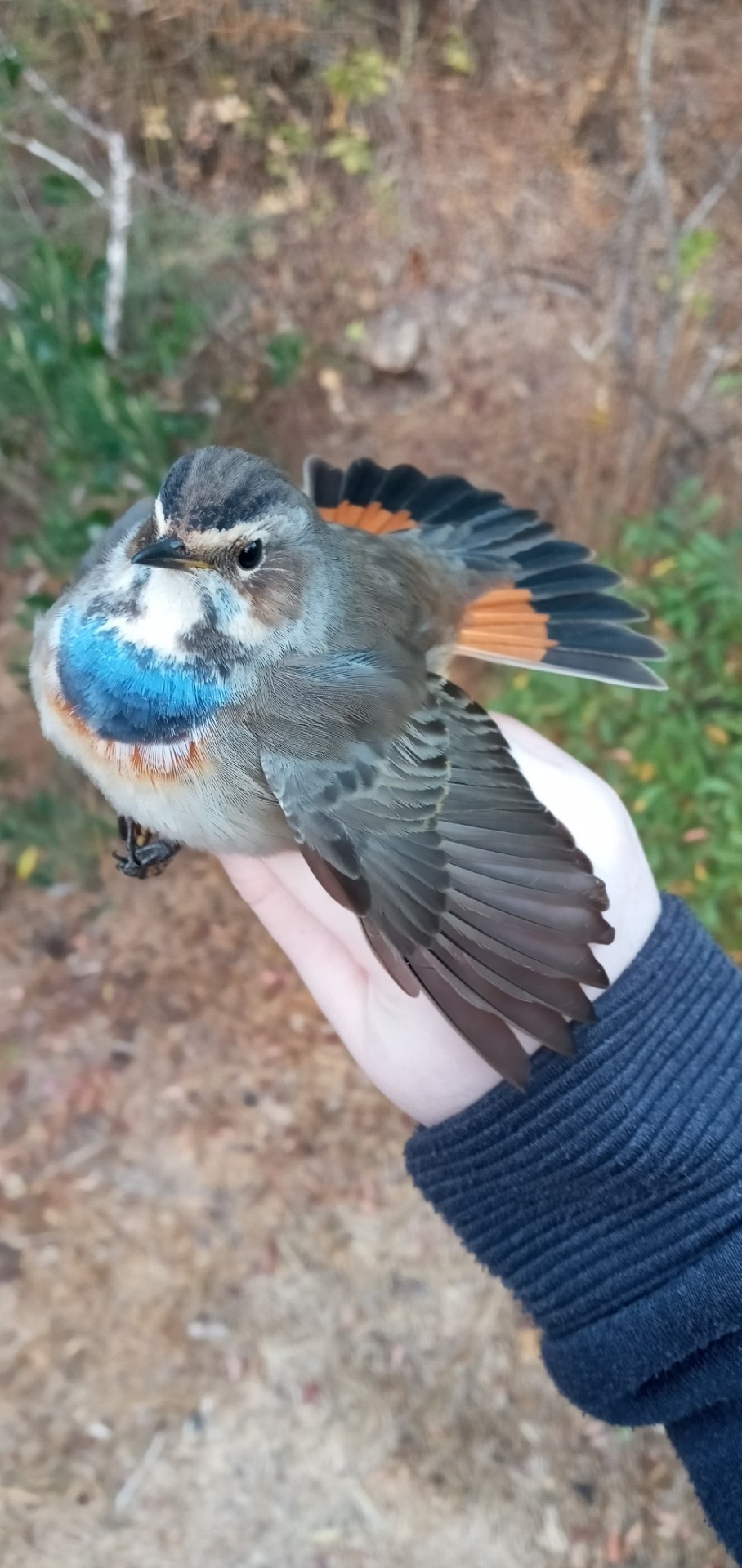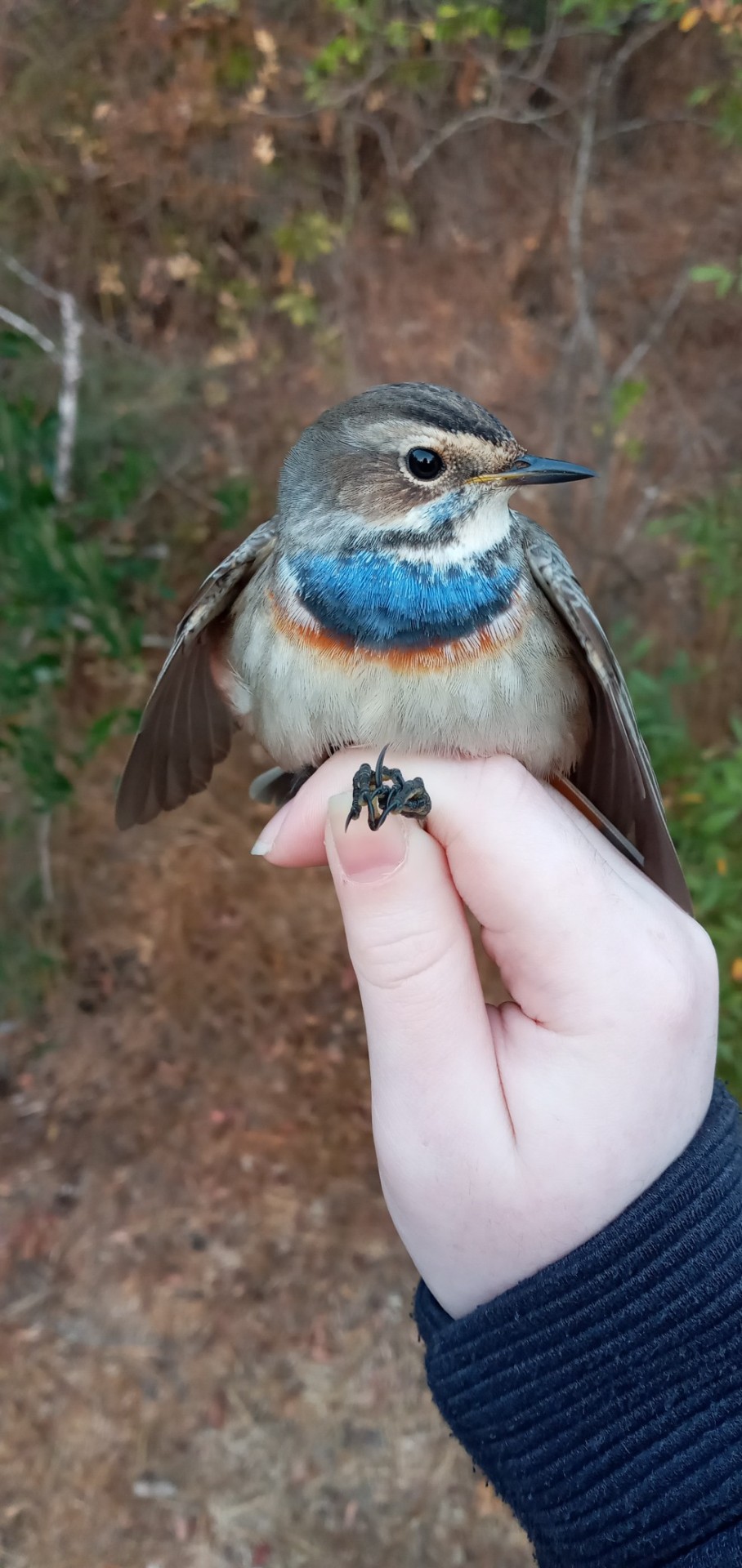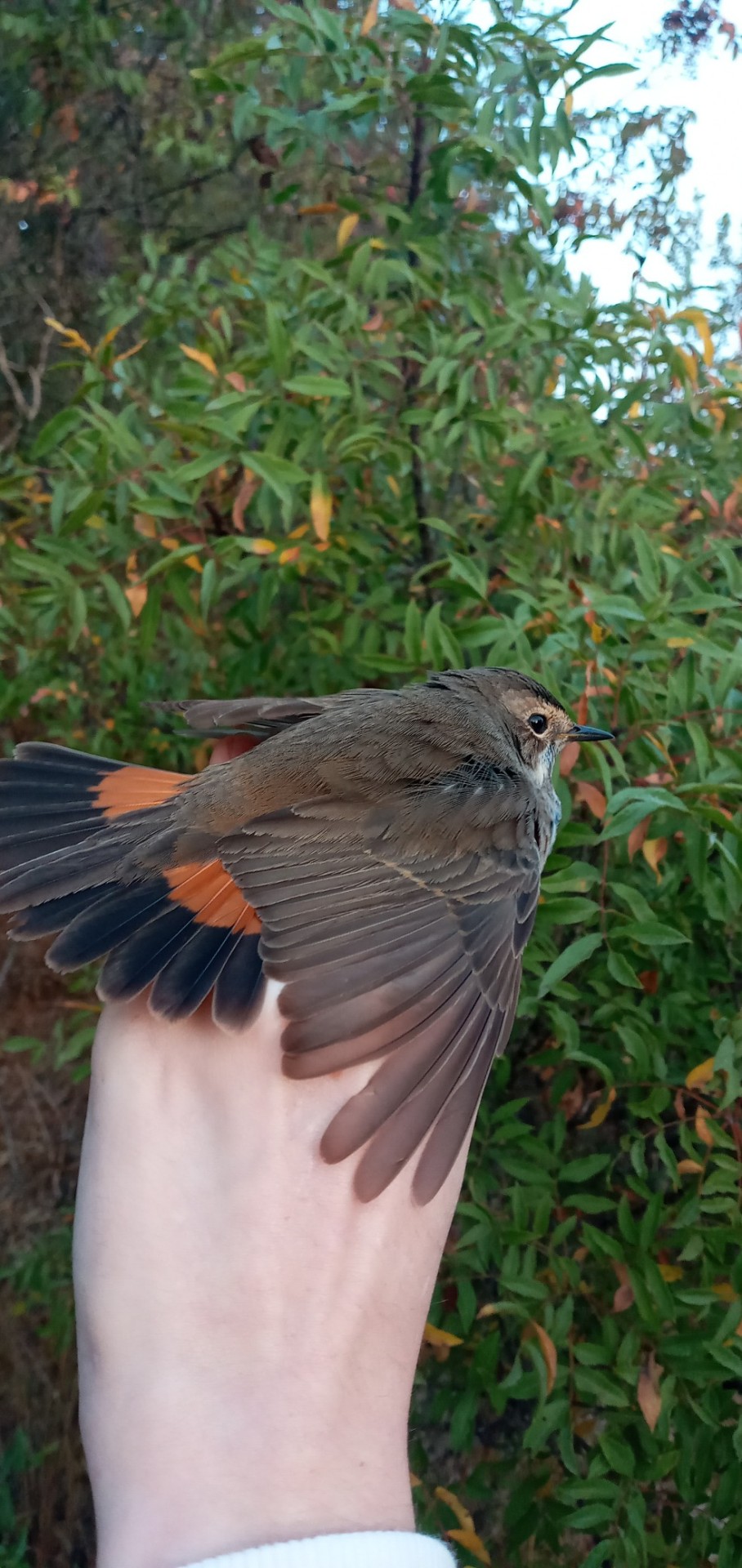Arches Across An Arctic Sky : What Are These Two Giant Arches Across The Sky? Perhaps The More Familiar

Arches Across an Arctic Sky : What are these two giant arches across the sky? Perhaps the more familiar one, on the left, is the central band of our Milky Way Galaxy. This grand disk of stars and nebulas here appears to encircle much of the southern sky. Visible below the stellar arch is the rusty-orange planet Mars and the extended Andromeda galaxy. For a few minutes during this cold artic night, a second giant arch appeared to the right, encircling part of the northern sky: an aurora. Auroras are much closer than stars as they are composed of glowing air high in Earth’s atmosphere. Visible outside the green auroral arch is the group of stars popularly known as the Big Dipper. The featured digital composite of 18 images was captured in mid-December over the in Norway. via NASA
More Posts from Eggxecutive-dysfunction and Others







Bluethroat (Luscinia svecica), male, from a banding. Jerusalem Bird Observatory (JBO). 21.10.21

Jupiter s Swimming Storm : A bright storm head with a long turbulent wake swims across Jupiter in these sharp telescopic images of the Solar System’s ruling gas giant. Captured on August 26, 28, and September 1 (left to right) the storm approximately doubles in length during that period. Stretching along the jetstream of the planet’s North Temperate Belt it travels eastward in successive frames, passing the Great Red Spot and whitish Oval BA, famous storms in Jupiter’s southern hemisphere. Galilean moons Callisto and Io are caught in the middle frame. In fact, telescopic skygazers following Jupiter in planet Earth’s night have reported dramatic fast moving storm outbreaks over the past few weeks in Jupiter’s North Temperate Belt. via NASA

Eurasian nuthatch/nötväcka.

NGC 6357: Cathedral to Massive Stars : How massive can a normal star be? Estimates made from distance, brightness and standard solar models had given one star in the open cluster Pismis 24 over 200 times the mass of our Sun, making it one of the most massive stars known. This star is the brightest object located just above the gas front in the featured image. Close inspection of images taken with the Hubble Space Telescope, however, have shown that Pismis 24-1 derives its brilliant luminosity not from a single star but from three at least. Component stars would still remain near 100 solar masses, making them among the more massive stars currently on record. Toward the bottom of the image, stars are still forming in the associated emission nebula NGC 6357. Appearing perhaps like a Gothic cathedral, energetic stars near the center appear to be breaking out and illuminating a spectacular cocoon. via NASA


Canário-da-terra/Saffron Finch
Sicalis flaveola
————————–
Estou participando de um concurso fotográfico. As fotos mais curtidas ganham. É só clicar nos links e curtir minhas fotos: https://abre.ai/dtP2 e https://abre.ai/dtP1
———————
I’m participating at a photographic contest. The pictures with more likes will win. Click on links to like my pictures: https://abre.ai/dtP2 and https://abre.ai/dtP1
a gryphon that’s half pelican, half skunk, known as the Smellican

Elsa. Värmland, Sweden (April 24, 2022).

Orion’s Recently Installed Solar Array Wings : Two of Orion’s four recently installed solar array wings are exposed and surrounded by the panels that will protect it during launch and ascent. (via NASA)
-
 tails-of-a-dragon-rider liked this · 2 years ago
tails-of-a-dragon-rider liked this · 2 years ago -
 is-this-lit reblogged this · 2 years ago
is-this-lit reblogged this · 2 years ago -
 lovesedeath liked this · 3 years ago
lovesedeath liked this · 3 years ago -
 darkpatrolwolf liked this · 3 years ago
darkpatrolwolf liked this · 3 years ago -
 cernunnos1990 reblogged this · 3 years ago
cernunnos1990 reblogged this · 3 years ago -
 werewoofs liked this · 3 years ago
werewoofs liked this · 3 years ago -
 saltythexfilesindianjonescop liked this · 3 years ago
saltythexfilesindianjonescop liked this · 3 years ago -
 lapislaputa reblogged this · 3 years ago
lapislaputa reblogged this · 3 years ago -
 constantly-falling-from-grace reblogged this · 3 years ago
constantly-falling-from-grace reblogged this · 3 years ago -
 therattqueen liked this · 3 years ago
therattqueen liked this · 3 years ago -
 wakayume liked this · 3 years ago
wakayume liked this · 3 years ago -
 fireyhotsupertalia reblogged this · 3 years ago
fireyhotsupertalia reblogged this · 3 years ago -
 coneheda reblogged this · 3 years ago
coneheda reblogged this · 3 years ago -
 lateoctobermoon reblogged this · 3 years ago
lateoctobermoon reblogged this · 3 years ago -
 chryso-poeia liked this · 3 years ago
chryso-poeia liked this · 3 years ago -
 harachnegrece liked this · 3 years ago
harachnegrece liked this · 3 years ago -
 tonraqd reblogged this · 3 years ago
tonraqd reblogged this · 3 years ago -
 gothranch reblogged this · 3 years ago
gothranch reblogged this · 3 years ago -
 scarlett3drag0n liked this · 3 years ago
scarlett3drag0n liked this · 3 years ago -
 kyonshii reblogged this · 3 years ago
kyonshii reblogged this · 3 years ago -
 mymindlostmefan liked this · 3 years ago
mymindlostmefan liked this · 3 years ago -
 janetm74 reblogged this · 3 years ago
janetm74 reblogged this · 3 years ago -
 janetm74 liked this · 3 years ago
janetm74 liked this · 3 years ago -
 sylvanthorn reblogged this · 3 years ago
sylvanthorn reblogged this · 3 years ago -
 sylvanthorn liked this · 3 years ago
sylvanthorn liked this · 3 years ago -
 were-wave reblogged this · 3 years ago
were-wave reblogged this · 3 years ago
